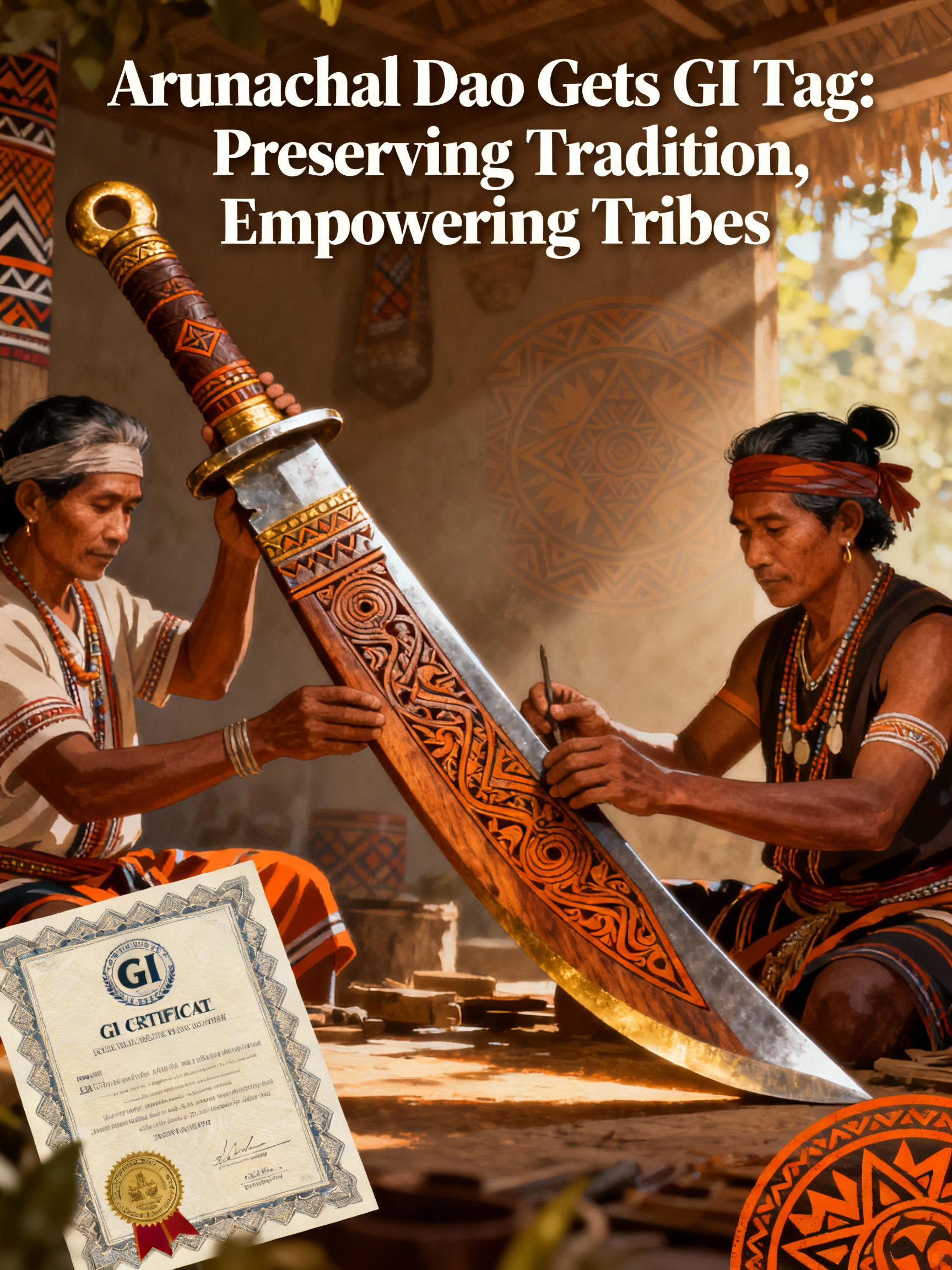The traditional Arunachal Pradesh dao, a hand-forged blade integral to several tribal communities, has been awarded the Geographical Indication (GI) tag.
This GI status officially recognizes the dao as a unique cultural product tied to its place of origin and highlights the region’s blacksmithing heritage.
The dao, crafted with inherited blacksmithing skills, symbolizes precision, cultural identity, and serves diverse everyday uses among tribal groups.
The new GI tag will help preserve traditional forging practices and protect the identities of tribal artisans, enhancing the authenticity and distinction of the product.
Authorities expect the GI certification to improve market access for rural artisan clusters, drive up consumer trust, and boost income stability for dao-makers.
The government is launching training, quality improvement, and promotional programs to expand opportunities and ensure the sustainability of blacksmithing communities.
Arunachal Pradesh now strengthens its contribution to India’s expanding GI ecosystem, with the dao joining Wakro Orange, Idu Mishmi textiles, Khamti rice, Yak churpi, and Wancho wooden crafts on the GI roster.
With the dao’s GI tag, the state has about 20 GI-recognized items, supporting regional economic development and safeguarding time-honored traditions.
The India GI Registry operates under the Geographical Indications of Goods (Registration and Protection) Act, 1999, which provides legal protection for products with unique regional characteristics.
State officials aim to increase the number of GI-certified products to 50 by 2030, aiming for greater economic uplift and cultural reaffirmation for traditional artisan communities.

Arunachal Dao Gets GI Tag: Preserving Tradition, Empowering Tribes
The iconic Arunachal Dao blade secures Geographical Indication status, boosting tribal craftsmanship, market value, and cultural pride—positioning Arunachal Pradesh as a leading contributor to India’s protected heritage products.


